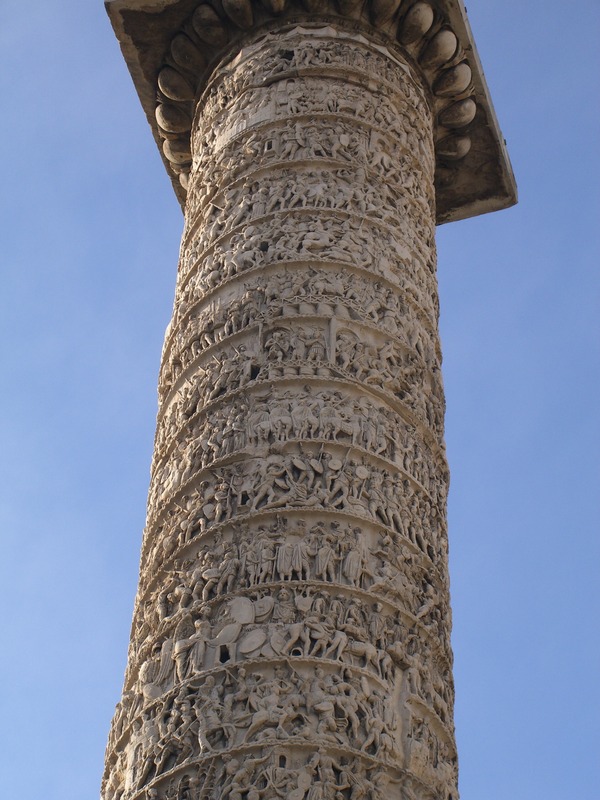Dedication
With the original inscription now lost, scholars debate the purpose and date of decree of the Column for Marcus Aurelius.1 Beckmann provides the most recent analysis, suggesting two likely scenarios among many possibilities. In one scenario, the Column was decreed in 176 CE by the Senate, to honor Marcus upon his victorious return to Rome. In the other scenario, Marcus’ son Commodus erected the Column as a funerary monument after Marcus' death in 180.
Beckmann concludes that 176 is the probable date for the decision to build the Column, for several reasons. First, Commodus did not join Marcus’ first campaign until 175. Therefore, he would not have been shown on the Column's early representations of the first campaign, if the column was decreed and designed in 176.2 Depiction of Commodus would instead suggest the 180 scenario. Beckmann does not find any credible depiction of Commodus, supporting the 176 decree date.3 We can also date historical scenes on the frieze as visual evidence. As Beckmann convincingly argues, though, most of the scenes are generic and only three are potentially historical. Of the three, only one proves to be actually historic, and loses its chronological significance without the other two.4 On the other hand, Adrastus, the caretaker of the Column, referred to it in 193 CE as “the column of the deified Marcus,” perhaps indicating a funerary intention.5 However, Marcus was dead for some years at that time, so Adrastus does not tell us whether the monument was dedicated posthumously. Moreover, the frieze contains mostly military imagery, none relating to funerals or apotheosis.6 Cassius Dio, a Roman senator in the time of Commodus, fails to mention any column among Marcus’ funerary honors, which also supports the notion that the column was not part of them.7
